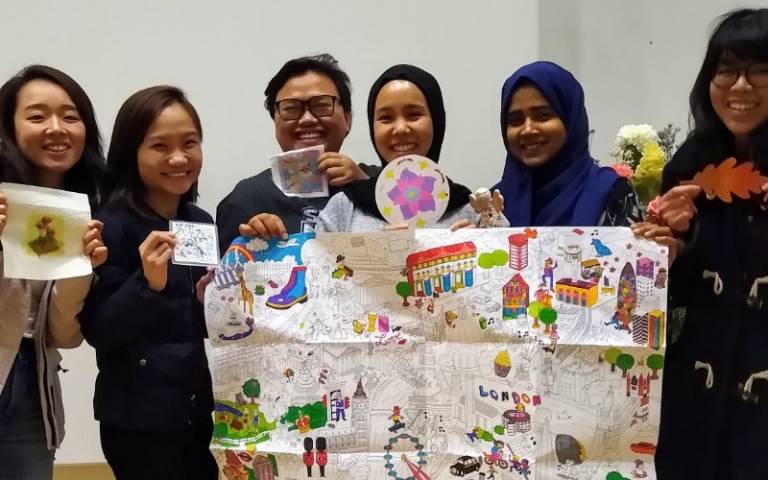Don’t wait for your tutees to come to you: a multimodal approach to personal tutoring
Harriet Shannon, UCL Great Ormond Street Institute of Child Health, shares a team-based approach to actively seek engagement from students.

11 November 2019
Working within UCL’s personal tutoring framework
We want to make sure that all undergraduates and postgraduates are supported, regardless of their background, experience or stage of learning.
Harriet presented her original approach at the UCL Education Conference and shares her team’s top tips for tutoring success.
Responding to student feedback
Students told us that staff were not available and that they weren't receiving a lot of support between the taught modules.
Our modules are ‘short and fat’ so there are several weeks between taught modules where students don’t have a lot of face-to-face contact with staff.
We know that students interact in different ways. Some are happy to come and find us, others are more reticent.
We established three alternative ‘ways in’ for students who wish to engage with staff but are not sure how to do so.
Team-based approach
The whole physiotherapy teaching team are involved.
Weekly drop-in
Though we have an ‘open door’ policy, students can be reluctant to visit their tutor unannounced. Staff can also find it disruptive when they are constantly facing interruptions. The weekly drop in ensures staff are accessible to students at designated points during the week.
The weekly drop-ins take place within the student’s teaching building (rather than staff offices), to ensure that the environment is familiar.
Students are encouraged to use the drop-in to:
- ask a quick question
- raise a concern that they might have
- simply let staff know that they are doing okay.
Breakfast craft sessions
Students are invited to join a session to do something creative. This allows the tutors the opportunity to chat informally with students, or to craft alongside a student to start a ‘sideways conversation’ that the student may not have brought up independently.
These sessions are incorporated into every taught module and are not obligatory for students.
We develop a craft activity, such as:
- pompom making
- decoupage
- silk painting.
that is linked to either:
- religious festival
- seasons
- the module itself.
Targeted, unsolicited emails
Every few months, a tutor will send an email to a student to actively seek engagement.
This is often structured around a known interest (for instance, it might be to mention Wimbledon to a keen tennis player, or to enquire about half term plans to a student with children).
This is followed by a general enquiry about how the student is getting on with the course. As a result, the student feels as though they have a personal connection with their personal tutor, and it also provides an opening for the student to voice any concerns they might be having, or to seek general advice.
Harriet says:
“Rather than waiting for students to come to us, these approaches actively seek out student engagement. This has been rewarding for both students and staff.
What is the impact on resources?
The approach is a low burden for staff. The drop-ins are weekly and staff are on a rota to cover these.
Continual development
We are always striving to improve our support to students. We are currently exploring the possibility of asking alumni to run some of the drop-in sessions so that students can speak in confidence to somebody who knows about the course from the student perspective.
 Close
Close

